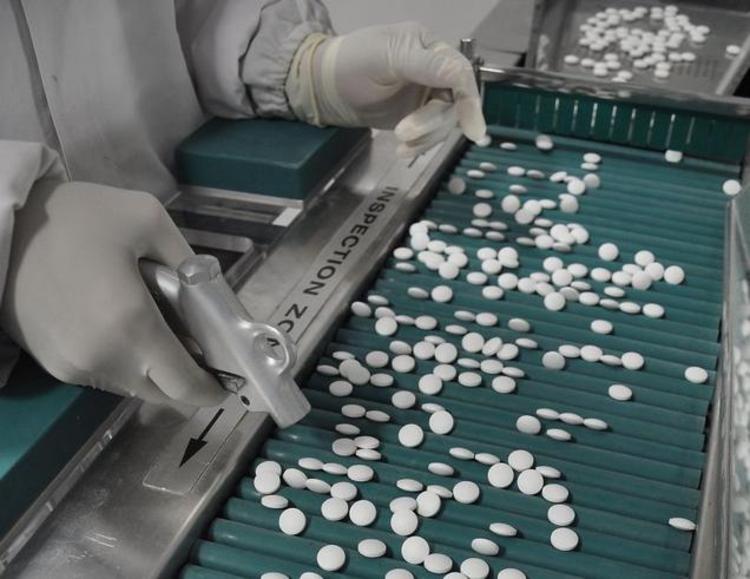
The Sunday Mail

Sharon Kavhu – Extra Correspondent
Zimbabwe’s pharmaceutical industry has potential to supply some 70 percent of the country’s essential drugs requirements, the local Pharmaceutical Manufacturers’ Association (PMA) has said, but local manufacturers are contributing less than 50 percent.
Major pharmaceutical companies in Zimbabwe are CAPS Holdings, Datlabs, Ecomed, Graniteside Chemicals, Gulf Drug Company, NatPharm, Pharmanova, Plus Five Pharmaceuticals, Varichem and Zimpharm.
Capacity utilisation in the sector has incurred some of the largest declines of any industry in Zimbabwe.
According to the Confederation of Zimbabwe Industries 2013 manufacturing sector survey report, pharmaceutical manufacturers capacity fell from 58 percent to 20 percent.
Information from the Health and Child Care Ministry shows that the country’s public hospitals are estimated to be carrying less than 50 percent of the essential drugs they require.
At least 98 percent of essential drugs are being made available through donor-funded programmes.
Such high dependence on donors for essential drugs poses a major health and security risk.
PMA chair Mr Emmanuel Mujuru says there is no indication there will be an immediate improvement to the situation.
“A reduction in capacity utilisation is a result of an increase in production costs. The pharmaceutical industry has one of the highest overhead structures in manufacturing because it is capital and skills intensive.
“Duty and VAT are being levied on imported raw materials when finished drugs are imported duty and VAT-free. This has created an uneven paying field which makes it cheaper to import medicines as opposed to producing them locally.
“This actually increases the cost of locally produced drugs by on average 21,75 percent. On the other hand we have cheap drugs from Asian countries, thus reducing the market for pharmaceutical products manufactured locally.”
Local companies export almost 20 percent of their product to the SADC region where South Africa is the largest pharmaceutical market.
However, they face non-tariffs barriers on exports to South Africa.
Medicines destined for South Africa must be air freighted as per that country’s regulations, while drugs from across the border into Zimbabwe can come by road. This means exports to South Africa are more expensive than product coming out of that country. And with a tax on pharmaceutical raw materials in place, and no tax on finished drugs, it makes it cheaper to import the final product rather than manufacture locally.
The scenario is certainly not in the spirit of Zim-Asset, which has local value addition and beneficiation as one of its four clusters.
Mr Mujuru says the industry is in urgent need of plant upgrades, retooling and product development.
“The situation is being worsened by expensive short-term borrowing and liquidity constraints, which increase the cost of credit and capitalisation.”
He adds that delays in registration of local innovations are also hurting the industry.
“The country has the capacity to supply IV fluids (drips) but two such facilities at Datlabs and CAPS are lying idle,” says part of a PMA report for 2013.
“During the cholera outbreak IV fluids were air-freighted into the country by humanitarian organisations instead of being procured from local companies.
“They ended up costing three-times more than the cost of procuring them locally. Some of the donated drugs are of suspect quality posing national health risks.
“Also because of donor pressure the country is forced to fast track registration of such drugs.
“In the past the local industry was sustained by World Health Organisation or European Union-funded tenders. However, these institutions are no longer active in the local market.”
Even then, there are some bright spots with Varichem Pharmaceuticals voted Exporter of the Year in the manufacturing sector last year.
The local industry was the first in Africa to start manufacturing generic ARVs.
According to the latest report of the Business Monitor International on the local pharmaceutical industry, the value of products consumed in Zimbabwe increased by 7,5 percent from US$233 million in the first of 2013 to US$251 million from January to June 2014.
CZI president Mr Charles Msipa says Zimbabwe must learn how other countries have built this sector into a vibrant one.
“We understand that policy makers are making policy changes to ensure that the issues of unfair import tariffs on pharmaceutical products are solved. However, as a country there is a need to listen to what foreign investors are interested in investing so that we partner with them for recapitalisation of our pharmaceutical industry.
“It is also important to urgently remove duties and VAT on raw materials and the packaging of imported goods by licensed pharmaceutical companies for local production of medicines.
“All drugs which are necessary for importation should be imported by the local manufacturers instead of wholesalers for easy monitoring and accountability of the necessity to import required drugs.”
He suggests that imports that can are locally manufactured should attract a 30 percent tax. This, he believes, will encourage local production while other measures are implemented.
Local manufacturers have asked Government to prod donors towards buying local pharmaceutical products that they give to the National Pharmaceutical Company (NatPharm).
Stakeholders say local manufacturers require at least US$80 million to establish a competitive industry that can compete in the US$45 billion African pharmaceutical market.




